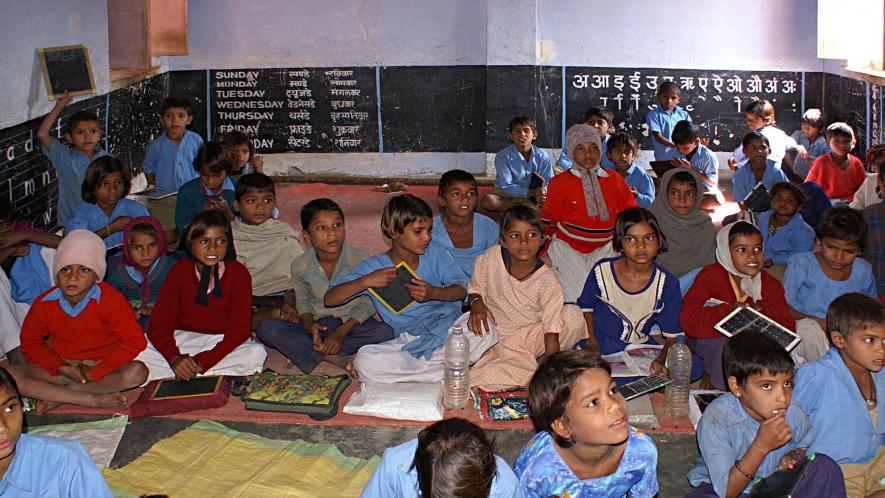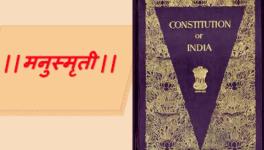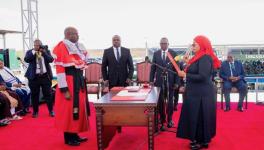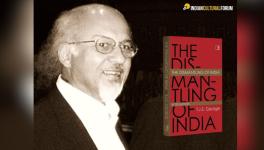How the Constitution Connects People to History, Values and Rights

Image Courtesy: PxHere
In India, ideals such as equality, justice, liberty, and fraternity often seem distant from education systems and our collective awareness. Nevertheless, numerous organisations have endeavoured to incorporate social and political education into their work. One effective method involves creating spaces that bring the Constitution of India alive, bridging the gap between abstract notions of morality, rights, and values and the everyday realities of people.
Why the Constitution?
When these authors sought feedback after coordinating a fellowship on constitutional values among rural youth in Rajasthan, one participant, Rahul [name changed], from a dominant caste, was the first to respond. He said, “We learn the Constitution in our schools, but never in a way to understand how it applies to our lives. Even though I have practised untouchability towards the ‘lower’ castes in my village, I never felt it was wrong. [Village] society says it’s fine, but it is not allowed—[according to the Constitution], we all are equal and have equal rights.”
More than 70 years since the inception of the Constitution, a considerable number of Indians seem unaware of its history, principles, foundational ideas, and the rights it embodies. This lack of awareness is concerning given the divisive prevailing atmosphere with various forms of hatred proliferating. With the evident rise in violent episodes amid growing discrimination based on gender, sexuality, caste, ethnicity, class, and religion, it is clear that feelings of inhumanity are easily learned.
If there had been a concerted effort to instil constitutional values since the Constitution was enacted in 1950, society might have imbibed greater empathy, equality, and acceptance of differences. In recent decades, numerous organisations and collectives have recognised this and actively engaged with people on these values.
The Constitution lays out a democratic vision to empower all the people of India and enshrines secularism, equality, justice, dignity, fraternity and liberty as its values in the Preamble itself. When introduced in curricula creatively, these values can lead to more self-reflectiveness, unpack discriminations, open world-views, and connect emotions to reality. As Rahul’s responses show, humanity can be learned, too, not just hate.
Organisations such as the School for Democracy (SFD), Samvada, Navsarjan Trust, and many others look to use constitutional values and rights as a pedagogical base to engage the communities they work with. In our experience working with the SFD and engaging with other organisations that place democracy and constitutional values at the centre, real possibilities arise when people feel connected to its history, values, and rights.
Emotions that Empower
‘Why should we learn this?’ is often asked during workshops. Since many organisations work with vulnerable communities, it is good to start with whether people even want or care about such knowledge. Does a farmer or daily wage labourer care about a constitutional promise? Imposing seemingly abstract ideas like ‘constitutional values’ and rights may be incorrect unless the goal is to connect with lived socio-economic realities.
In a workshop doing a role play with a group on equality, one youngster, Jamna [name changed], explained that she essentially played her own character. She said that most girls understand what equality means because they experience its opposite everywhere—at home, in the village, and their lack of agency.
This moment has taught us a lot. Before we can define justice, we must understand injustice. We must talk about fraternity after we have dealt with divisiveness and so on.
Today, India confronts a crucial question: How does a curriculum based on the secular Constitution become more relatable in an “essentially religious” (a term popularised by the legal scholar Faizan Mustafa) nation? With religion being employed as a tool to propagate hatred, the youth get introduced to hate-spewing ideologies in their schools or through their village networks. These narratives vilify non-Hindus and predominantly target Muslims.
It is crucial to highlight the positive values of religions and how they align with the Constitution. It must be done in a way that does not make individuals feel attacked for who they are and allows them to examine what different religions preach. This is a nuanced process, and we delved into it to an extent at SFD sessions, such as through myth-busting and celebrating various festivals.
In our experiences in Hindu-dominated rural areas, exposure to the ‘other’—an identity different from one’s own—is severely limited due to caste and religious segregation in villages. Providing a platform for exposure to or even introducing diversity in the classroom thus helps break preconceptions. Visiting sacred spaces such as mosques and churches also tends to dispel the fear of the ‘other’, often ingrained through childhood propaganda.
But the benefits of multiple interactions and exposure hold true for any social identity, not just religion. Rituparna from Akam Foundation, who identifies as transgender, conducted a session on gender, encouraging youth to think beyond the binary. She conducted a session on gender using a heartwarming story about a child everyone perceived as a boy but who felt like a girl. This story and the facilitator’s experience helped the participants understand the challenges faced by the LGBTQIA community.
Further, a sense of inequality is acutely felt by anyone who experiences discrimination, and it can also result in a sense of empathy for the ‘other’. To cite one instance, not being formally educated or belonging to a non-elite class, caste, gender, ethnic or religious background may lead to discrimination at a government hospital. Another example is that a worker may feel angry, upset, frustrated or experience a mix of these emotions when denied fair wages or refused work. These are the range of feelings which connect the ordinary person to the rights in the Constitution. That is why constitutionalists always remind us that rights are intrinsically linked to dignity, inseparable from equality and justice. Therefore, emotion is political and the most genuine place from which pedagogical practice must begin.
Not Top-down but Down-up
Let us face it: Any constitution is a highly inaccessible document. And the length, language, and concepts of the Indian Constitution make it difficult for most people to relate to it. Therefore, the traditional, lecture-based way of getting people to understand constitutional values and rights rarely works. But how can teaching the Constitution be made simpler and democratised?
Pedagogy should not reproduce the power dynamic internalised in India’s education systems with its entrenched teacher-learner hierarchy and where formally educated elites train everybody else—rural Indians, working-class people, the marginalised sections, etc. We have a few suggestions from experience that can try to break the default hierarchical model of facilitator-participant.
First, the facilitators should represent varied identity locations, including caste, class, gender, ability, religious, and ethnic backgrounds. The experience of three young activists with the Mazdoor Kisan Shakti Sangathan is pertinent in this context. These activists from non-elite castes opened a session on religious discrimination with local youth in rural Rajasthan by describing their lived experiences, through songs and slogans, about (in)equality. The most effective part of this day-and-a-half-long interaction was when they explained how they were taught to hold prejudices against Muslims.
In online sessions, we would have two facilitators from vastly different social locations, not for inclusivity’s sake but for the audience to have someone to relate to, making the session topics much more meaningful. The lexicon of knowledge must include the local context, language and idiom at its foundation.
Secondly, the participants should also be the teachers. For example, in an online workshop, we asked the participants to pre-record and send their responses on what “azaadi” or freedom meant to them. The video weaving these together was shown during the session. Even within the limitations imposed by online sessions, this was a powerful approach, as it allowed intentional listening and learning from one another’s ideas of a complex concept. “Freedom” as a concept was then linked to freedom as a Fundamental Right in the Constitution. Empathy and learning emerge from personal reflection, knowledge, and the experiences of people with perspectives that differ from one’s own.
Thirdly, we learned from organisations like Samvada and Navsarjan Trust the importance of connecting individuals with livelihood and career opportunities to empower them. An integral aspect of their programmes is engaging in sustained interactions over 3-6 months regarding opportunities, incorporating perspective-building on the Constitution and society. Often, without such structure, young people from vulnerable communities end up working in hotels, or mines, or getting married early.
Exposure to alternative opportunities and support to attain them helps break the cycle of poverty, provides upward mobility, and instils confidence.
Breaking the top-down approach to learning and putting the narratives and experiences of marginalised groups at the centre is how generative discourses emerge. In their own interest, institutions must break away from elitist concepts of education, action, awareness and practice. Pedagogy must be a liberator, not perpetuate oppressive structures.
The Indian Constitution can be a base to connect theory with practice and encourage critical thinking. Since the values and rights of the Constitution are under attack, teaching it is all the more important. Used creatively, it can help people recognise their position in a systematically unequal society. It can make building up a discourse of justice, equality, rights, and empowerment possible.
Nawazuddin was with the School for Democracy, working on social and political education focused on rural youth engagement and curriculum development. Saba worked with the Social Work and Research Centre (Barefoot College) and the School for Democracy. Her experience includes building models for rural community libraries, making curricula and facilitating workshops on constitutional values with youth.
Get the latest reports & analysis with people's perspective on Protests, movements & deep analytical videos, discussions of the current affairs in your Telegram app. Subscribe to NewsClick's Telegram channel & get Real-Time updates on stories, as they get published on our website.























